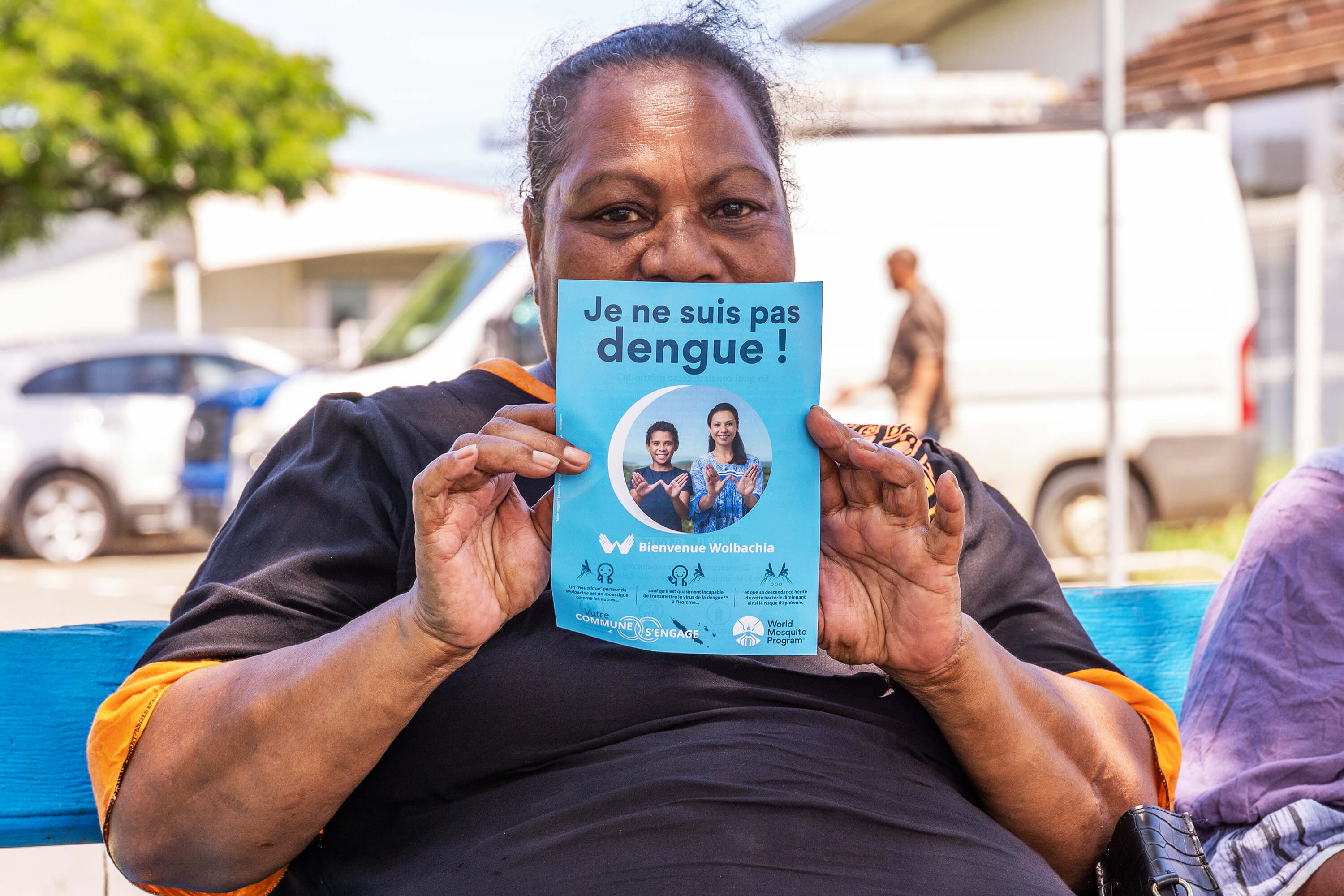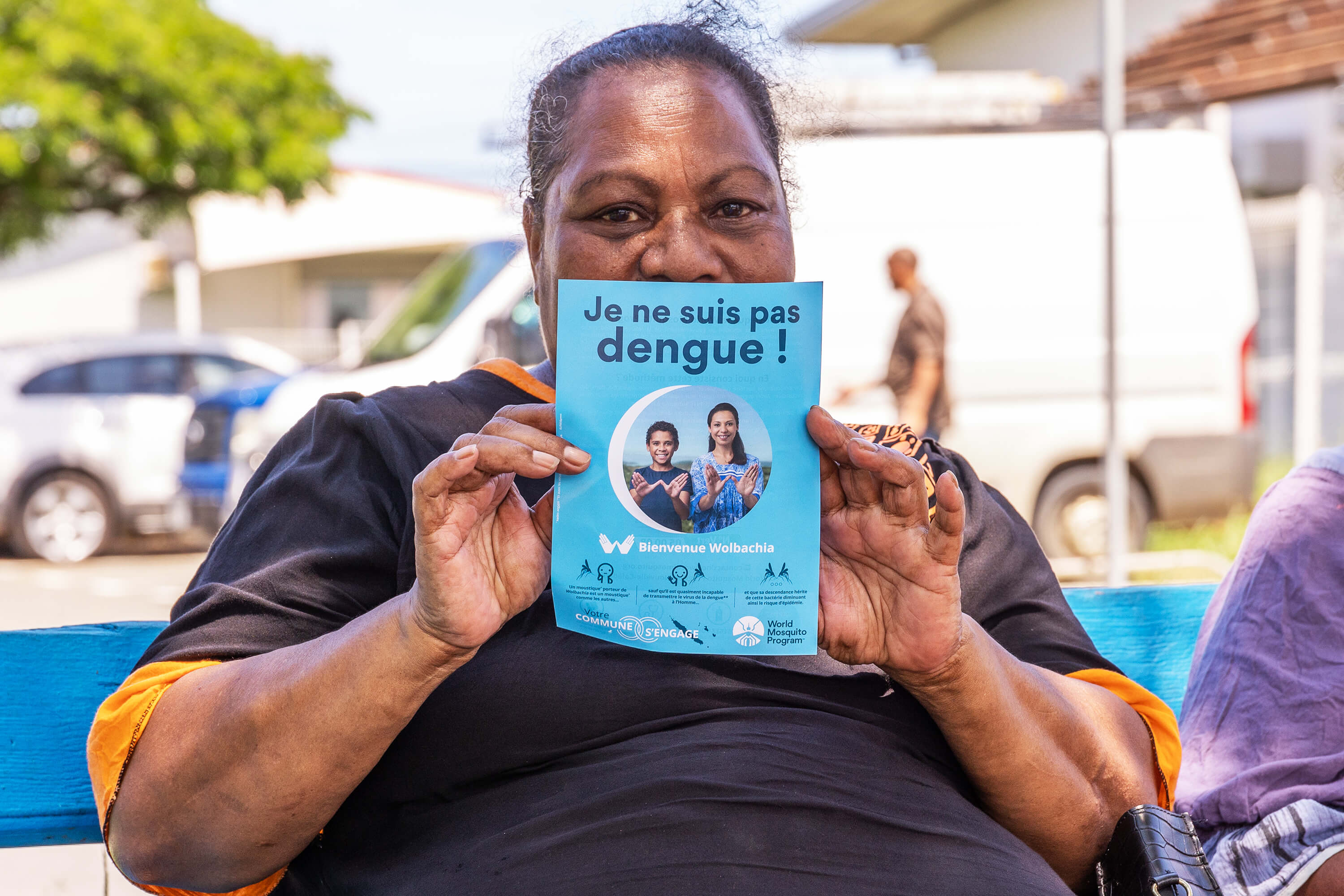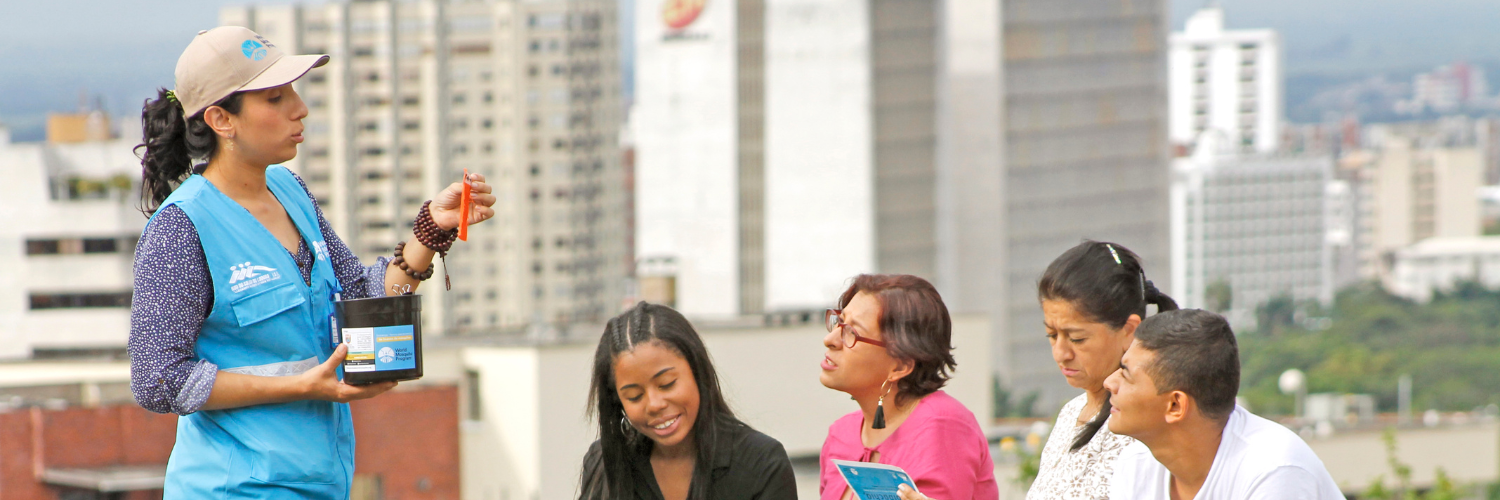WMP Expands Dengue Prevention in Laos
Dengue fever has long been a persistent threat across Southeast Asia, with Laos particularly affected by seasonal outbreaks that devastate communities. Building on successful initial releases, the World Mosquito Program is now entering the second phase of its work in Laos, expanding its innovative Wolbachia method across Vientiane. Through collaboration with the Lao PDR Ministry of Health and Save the Children International, this sustainable approach aims to protect over 1.2 million people from mosquito-borne diseases including dengue, Zika, and chikungunya.
Community Heroes: Local Volunteers Fighting Dengue in Vientiane
For almost a year and a half, Phoutmaly Thammavongsa, a local sweet seller and resident of Vientiane, volunteered to help combat mosquito-borne diseases across the capital city of Laos. From raising awareness about how to spot mosquito breeding grounds, to advocating for community members to host a mosquito release container (MCR) in their home, every day was different.
Laos' Dengue Crisis: Over 20,000 Cases and Counting
A year-round threat in the country, dengue cases reached more than 20,000 last year, with 11 dengue-related deaths. However, both Ms Keo and Thammavongsa have a renewed sense of optimism following the successful deployment of Wolbachia mosquitoes in the Chanthabouly and Xaysettha districts of the capital. The pilot project, which saw the World Mosquito Program (WMP), Lao PDR Ministry of Health (MoH) and Save the Children International (SCI) join forces, helped protect 32 villages with a combined population of roughly 86,000 people
Following its conclusion in August 2023, many other residents have been interested in adopting WMP’s Wolbachia method – a safe, natural and one-time sustainable solution for preventing mosquito-borne diseases – in the country’s dengue hotspots.
“Dengue remains a major public health concern in Laos, particularly during the dry and rainy seasons when mosquito populations surge,” says H.E. Aphone Visathep, Vice Minister of Health.
“The disease places a significant strain on the health system, disproportionately affecting vulnerable populations, especially children. With limited health resources, dengue continues to pose a serious challenge, requiring sustained prevention efforts, active surveillance, and collaboration from all stakeholders.”

Be Part of the Solution: Join Our Community
Discover how we’re transforming lives and combating mosquito-borne illnesses globally. Sign up for exclusive insights and updates delivered straight to your inbox.
WMP's Wolbachia Method: A Sustainable Solution for Mosquito-Borne Diseases
Later this year, the project will expand to cover approximately 60 km2 in all nine districts of the capital, Vientiane, and 24 km² in Luang Prabang, Oudomxay, Savannakhet and Champasack provinces. The new release sites will see more than 1.2 million people protected by WMP’s Wolbachia method.
“Through our continued partnership with The Government of Laos and Save the Children, the expansion of Wolbachia within Vientiane represents a significant opportunity to reduce the burden of dengue,” says Breeanna McLean, WMP’s project manager in Laos. “We are excited to be working with our partners and communities for further deployments in Laos.”
The Vice Minister added: “On behalf of the Ministry of Health, we are grateful for the support from the Australian Government and look forward to supporting the successful implementation of the second phase of this project using the Wolbachia method.”
Empowering Youth: Students Join the Fight Against Dengue
The health ministry is encouraging people to keep complying with dengue prevention measures, as well as advising provincial health authorities to ensure school environments are clean.
At Vientiane High School, both 15-year-old Voipalin and 12-year-old Souphaxay, believe education and awareness of mosquito-borne diseases from a young age are so important.
Voipalin recalls feeling tired with no appetite when she was suffering from dengue. “I’ve had dengue twice now,” she says. “My brother also caught the disease. It’s very serious. I missed my friends, school and had to stay in bed for weeks — I was sick for nearly four months.”
Souphaxay’s best friend was ill and in hospital with dengue for a week earlier this year. He describes how she was admitted to hospital and missed many classes.
“Everybody can get dengue and I’m very scared of getting it now too,” says Souphaxay. “I want every person to be aware of it and protect themselves from getting dengue. I hope in the future less people get the disease and it will no longer be in our country.”

Community Impact: How Wolbachia Brings Hope to Families
Ms Keo recalls first hearing about the project on the radio and listening with great curiosity. After the village committee explained WMP’s Wolbachia method and provided information, her confidence grew.
“When I first heard about the method, it sounded unreal to me,” she recalls. “However, I feel more confident since it's safe and prevents the spread of dengue, which affects all our lives.
“ I truly have a high hope that this will free my family as well as Lao people from dengue in the future.”












